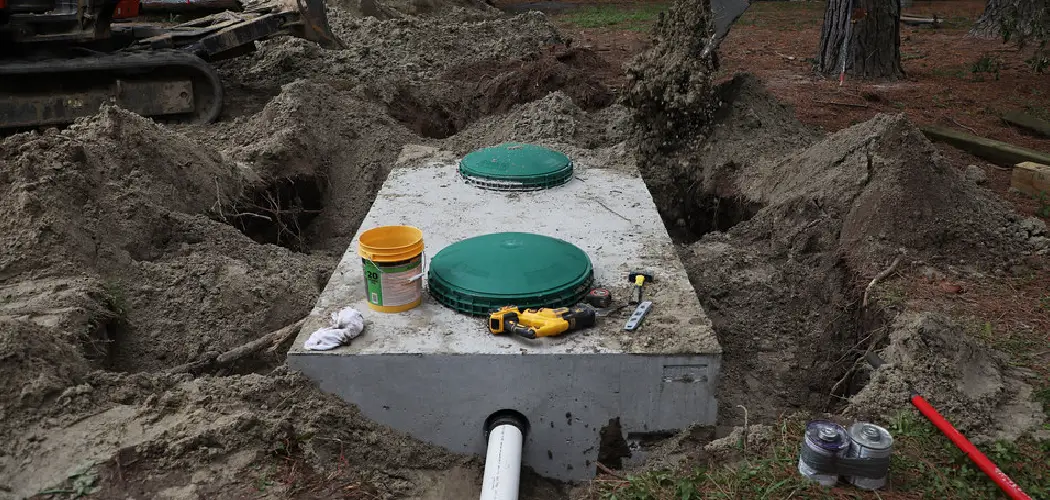Do you have a septic tank that has been lying dormant for too long? Are you wondering what steps you need to take to get it back in working order, or even to reactivate a septic tank altogether? Then this post is for you! Here, we will provide all of the information necessary on how to reactivate a septic tank.
With our step-by-step guide, no detail will be missed, and by following our advice, your desired outcome should be achieved without any fuss or mess. Stay tuned as we explain exactly what needs to be done in order to ensure that life with a functioning septic tank can be enjoyed!
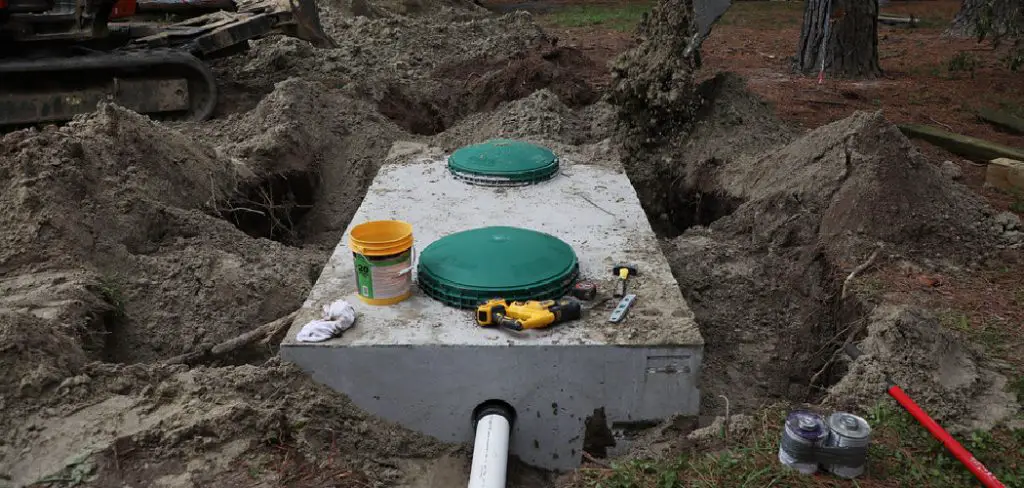
Reactivating an inactive septic tank doesn’t have to be an overwhelming process – instead, follow our guide to help make the rejuvenation process easier and ensure that your septic system is functioning properly. In this post, we’ll discuss what benefits come from reactivating a septic tank, as well as provide steps for how you can complete this task correctly by yourself.
Why is It Important to Reactivate a Septic Tank?
1. To Prevent the Buildup of Solids in a Septic Tank
One of the reasons it is important to reactivate a septic tank is to prevent the buildup of solids in the tank. When a septic tank does not receive enough water or sludge, the solid material can start to accumulate and cause blockages and backups in the system. This can lead to wastewater entering your house, yard, or even other parts of your property, which can be a health hazard.
2. To Keep the Septic System Working Efficiently
Reactivating a septic tank is also important for keeping the entire septic system working efficiently. As solids build up in the tank, it takes longer for water and sludge to move through the system, causing clogs and backup. If left unchecked, this can lead to more costly repairs down the road.
3. To Protect the Environment
Malfunctioning septic tanks can cause a variety of environmental problems due to untreated or partially treated sewage entering the environment. Reactivating your septic tank is important for keeping wastewater out of local waterways and helping to protect the environment.
By understanding why it is important to reactivate a septic tank, homeowners can ensure they are taking the necessary steps to keep their system functioning properly and protecting the environment. Taking proactive measures such as scheduling regular maintenance and pump-outs can help prevent costly repairs down the road.

Additionally, if you have any questions or concerns about your septic system, be sure to contact a local septic professional for help. They can advise you on the best course of action for maintaining and reactivating your septic tank.
How to Reactivate a Septic Tank in 5 Easy Steps
Step 1: Determine if Your Septic Tank Needs to Be Reactivated
The first thing to do is to determine whether your septic tank needs reactivation at all. If it’s been a while since the last time you had it pumped, or if you’ve noticed that your drains are slow or clogged, then chances are it does need some attention.
Step 2: Pump Out the Sludge and Solids in the Septic Tank
Before you can reactivate the septic tank, you need to pump out all the sludge and solids that have accumulated over time. This is an important step as it will ensure that your system is running at its most efficient level.
Step 3: Introduce a Bacterial Activator Into the System
The next step is to introduce a bacterial activator into the system. This will kickstart the bacteria and help them to break down any organic matter that has built up in the tank over time. You have to make sure to be careful while doing it.
Step 4: Let Your System Sit for 24 Hours
Once you’ve added the bacterial activator, it’s important to let your system sit for at least 24 hours. This will give the bacteria time to start breaking down any organic matter that is in the tank.
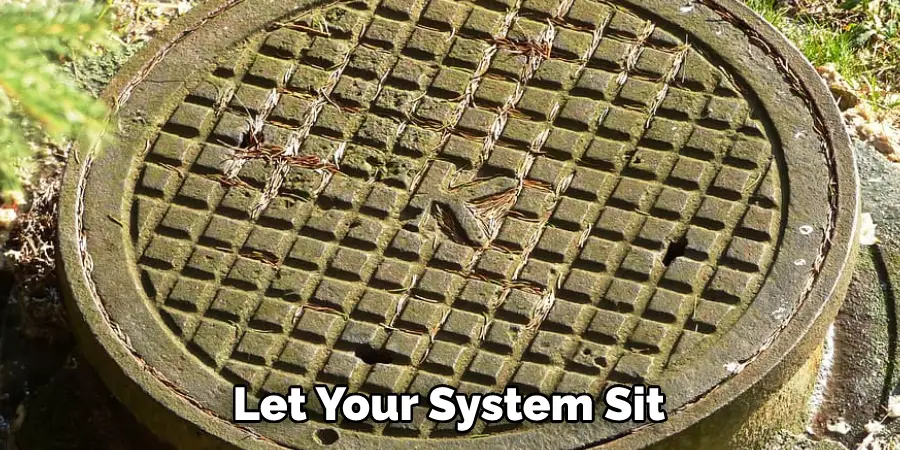
Step 5: Inspect Your System Regularly
Once you have reactivated your septic tank, it’s important to inspect it regularly and to pump it out when necessary. Doing this will help ensure that your septic tank is functioning properly and will help avoid any costly repairs or replacements in the future. With regular maintenance, you can keep your septic system running smoothly for many years to come.
Following these five simple steps will help ensure that your septic tank is working properly and that it is up-to-date with all the necessary maintenance. Reactivating your septic tank is an important step that should be done regularly in order to preserve its life span and ensure it runs as efficiently as possible. So, don’t wait any longer—get started on reactivating your septic tank today!
Some Additional Tips to Reactivate a Septic Tank
1. Do Not Use Too Much Water
Your septic tank needs bacteria to function properly, and excessive water can wash away the beneficial bacteria. To avoid this, only use the necessary amount of water when running dishes and laundry.
2. Do Not Overload the System
Avoid flushing large items or a lot of solids that cannot be broken down by your septic tank. This can cause clogs and lead to the need for expensive repairs. Also, make sure to avoid putting any non-degradable items such as plastic in your septic tank.
3. Check Your Septic Tank Regularly
Checking your septic tank regularly can help you avoid costly repairs due to buildup and clogs. Have your septic tank inspected once a year and pumped out when necessary to ensure it is functioning properly.
4. Use Septic Tank Cleaners
Using septic tank cleaners regularly can help to keep your septic tank bacteria active and reduce the need for pumping. These cleaners are available at most hardware stores or online and should be used according to the directions provided by the manufacturer.

5. Monitor Septic System, Warning Signs
Monitor for any signs of septic system failure and take action when necessary. These warning signs include slow drains, water pooling in the yard, bad odors coming from the drain field, or a wet spot in the yard near the tank. If you notice any of these signs, call a professional to inspect your septic system as soon as possible.
By following these tips, you can ensure that your septic tank is functioning properly and avoid costly repairs. Taking proper care of your septic system can save time, money, and hassle in the long run. Good luck reactivating your septic tank!
Frequently Asked Questions
What Precautions Should I Take When Reactivating a Septic Tank?
When reactivating a septic tank, it is important to take proper safety precautions. First and foremost, never enter a septic tank without the appropriate protective clothing and equipment. Make sure you have boots that are rated for entering an enclosed space with hazardous materials. Additionally, wear gloves, a face mask, and eye protection.
Moreover, always be sure to have someone with you while working on your septic tank in case of an emergency.
What Is the Best Way to Reactivate a Septic Tank?
The best way to reactivate a septic tank is by using beneficial bacteria. This process involves adding a bacteria-enriched solution to reintroduce beneficial bacteria into the septic system. This helps jumpstart the decomposition of organic material, which makes it easier for the tank to function properly.
Additionally, regular maintenance such as pumping and cleaning should be done regularly to keep your septic tank working efficiently.
How Often Should I Reactivate My Septic Tank?
It is recommended to reactivate your septic tank every 3 to 5 years. Additionally, it is important to regularly inspect and maintain your septic system in order to keep it running properly. If you notice signs of problems or backups in your plumbing fixtures, it may be time for an earlier reactivation.
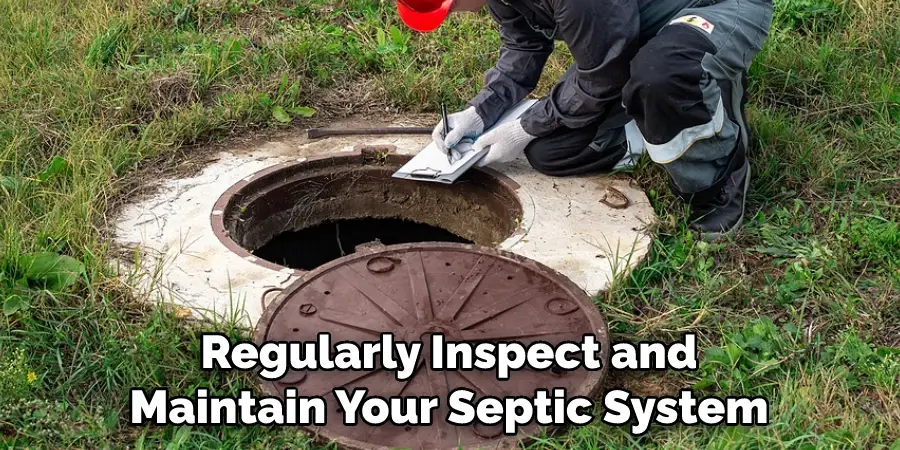
What Are the Benefits of Reactivating a Septic Tank?
Reactivating a septic tank can prevent costly repairs and replacements down the line. Additionally, it can help avoid major backups and overflows in your plumbing system. Regular maintenance helps keep your septic tank running efficiently and reduces the need for costly emergency services.
Moreover, reactivating a septic tank can help extend the life of your system and keep it functioning properly for years to come.
How Much Does It Cost to Reactivate a Septic Tank?
The cost of reactivating a septic tank can vary depending on the size and complexity of the system. Generally, it will cost between $200 and $500 to have your septic tank professionally serviced. Additionally, regular maintenance, such as pumping and cleaning may help reduce overall costs in the long run.
What Are the Signs That My Septic Tank Needs Reactivation?
The most common sign that your septic tank needs reactivation is when plumbing fixtures start to back up or overflow. Additionally, if you notice an unpleasant odor coming from your drains it could be a sign that your septic tank needs to be serviced. If you notice any of these signs it is important to have your septic tank serviced as soon as possible.
Reactivating a septic tank is an important part of keeping your plumbing system running efficiently and avoiding costly repairs down the line. By taking the proper precautions and regularly maintaining your septic system, you can help ensure that it is done properly.
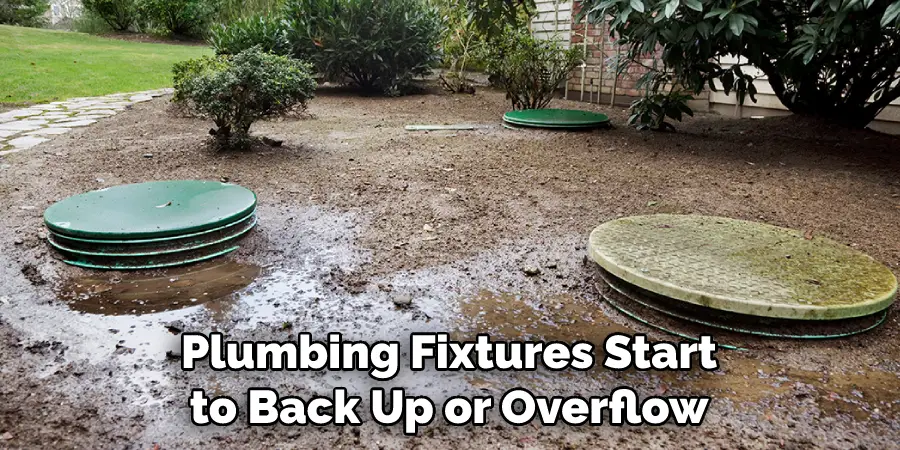
Conclusion
As you can see, there are many necessary steps to take in order to properly reactivate a septic tank. Not only must you ensure that all of the raw materials used to treat your tank are certified, but also that they are thoroughly mixed with the appropriate amount of water before they can be safely introduced. It is also important to monitor your septic tank system closely and make sure it functions correctly thereafter.
Remember, treating your septic tank is much less expensive than replacing it—so if you find that yours has been inactive for too long, taking action now could save you money in the long run. With these tips about how to reactivate a septic tank in mind, we hope you can now approach the task of re-activating your tank with confidence and safety.

